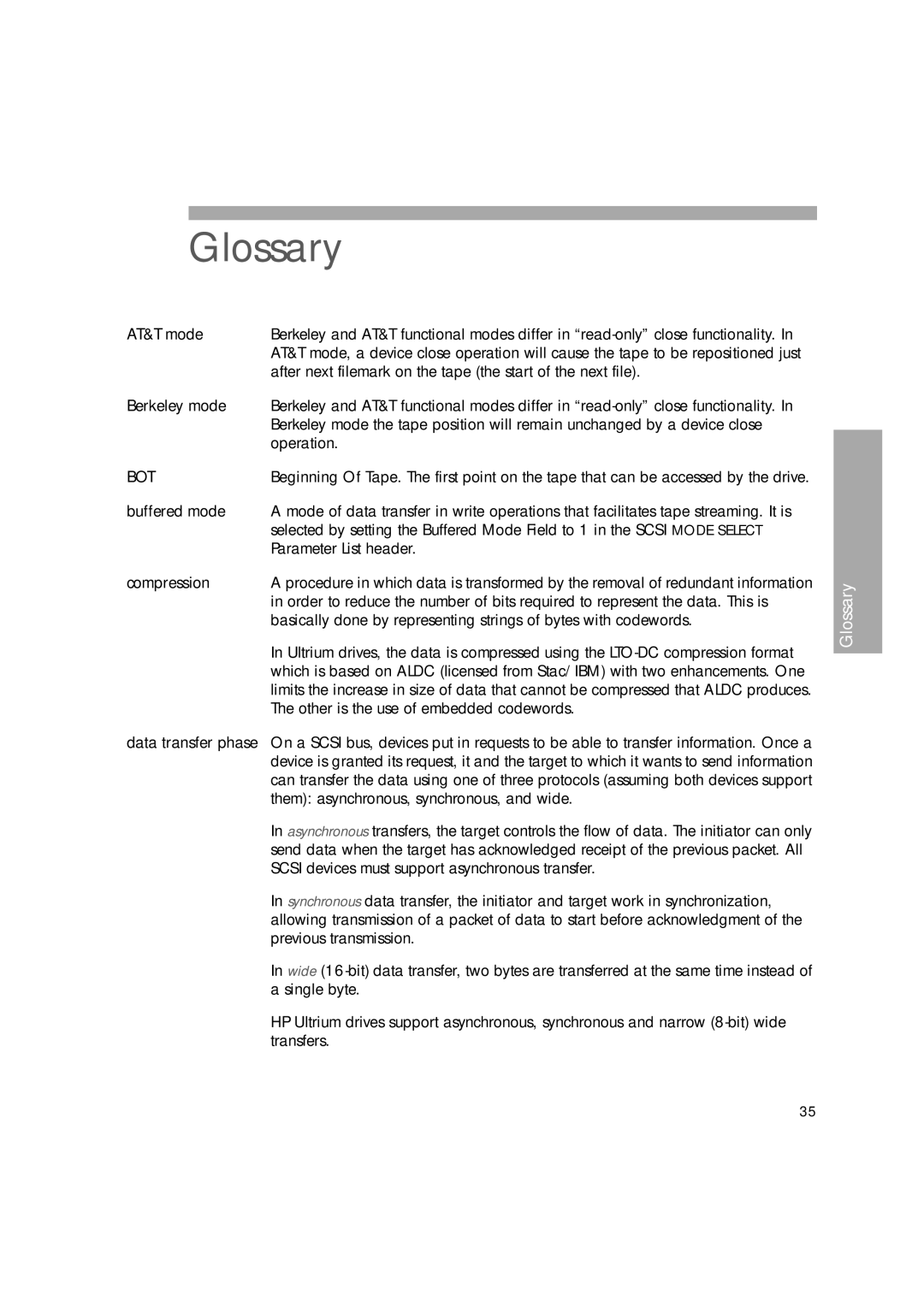
Glossary
AT&T mode | Berkeley and AT&T functional modes differ in |
| AT&T mode, a device close operation will cause the tape to be repositioned just |
| after next filemark on the tape (the start of the next file). |
Berkeley mode | Berkeley and AT&T functional modes differ in |
| Berkeley mode the tape position will remain unchanged by a device close |
| operation. |
BOT | Beginning Of Tape. The first point on the tape that can be accessed by the drive. |
buffered mode | A mode of data transfer in write operations that facilitates tape streaming. It is |
| selected by setting the Buffered Mode Field to 1 in the SCSI MODE SELECT |
| Parameter List header. |
compression | A procedure in which data is transformed by the removal of redundant information |
| in order to reduce the number of bits required to represent the data. This is |
| basically done by representing strings of bytes with codewords. |
| In Ultrium drives, the data is compressed using the |
| which is based on ALDC (licensed from Stac/IBM) with two enhancements. One |
| limits the increase in size of data that cannot be compressed that ALDC produces. |
| The other is the use of embedded codewords. |
data transfer phase | On a SCSI bus, devices put in requests to be able to transfer information. Once a |
| device is granted its request, it and the target to which it wants to send information |
| can transfer the data using one of three protocols (assuming both devices support |
| them): asynchronous, synchronous, and wide. |
| In asynchronous transfers, the target controls the flow of data. The initiator can only |
| send data when the target has acknowledged receipt of the previous packet. All |
| SCSI devices must support asynchronous transfer. |
| In synchronous data transfer, the initiator and target work in synchronization, |
| allowing transmission of a packet of data to start before acknowledgment of the |
| previous transmission. |
| In wide |
| a single byte. |
| HP Ultrium drives support asynchronous, synchronous and narrow |
| transfers. |
Glossary
35
